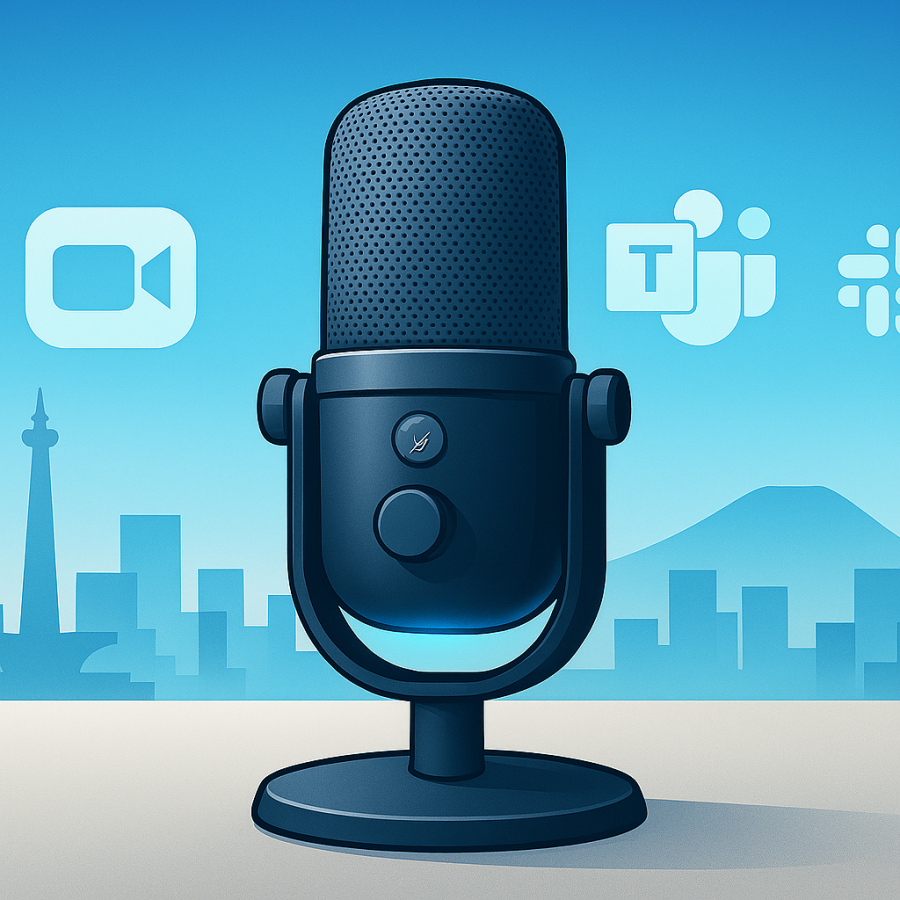Good audio matters more than HD video during online meetings. These microphones cost under $120, plug into any laptop without extra gear, and deliver a clear voice for Zoom, Teams, Meet, and Slack huddles. We listened for warm, natural tone, strong background noise rejection, and easy setup.
Top Picks Under $120
- Anker PowerConf S330 — USB-C speakerphone with four mics and echo cancellation.
- Fifine K669B — Plug-and-play USB condenser mic with desktop stand.
- JLab Talk GO — Dual pickup patterns for solo calls or small group sharing.
- Logitech H390 Headset — Reliable boom mic plus headphones for noisy environments.
- Rode Lavalier GO — Clip-on lavalier for presenters who need to move around.
Best Budget Microphones Detailed
Anker PowerConf S330 Speakerphone
A compact puck that sits in the middle of your desk and shares audio with the whole team. The four-mic array captures everyone within a 10-foot radius, while echo and noise suppression keep remote colleagues from hearing room reflections.
- Connection: USB-C (includes USB-A adapter), no drivers needed on Windows or macOS.
- Why we like it: Physical mute button with LED ring, loud 3 W speaker, and firmware updates via AnkerWork app.
- Best for: Hybrid offices, small conference rooms, or home users who dislike wearing headsets.
- Check price
Fifine K669B USB Microphone
The K669B delivers rich, broadcast-style tone for a fraction of the price of studio gear. It includes a solid metal body, cardioid pickup pattern, and on-mic gain knob so you can fine-tune levels without diving into software menus.
- Connection: USB Type-A (compatible with USB-C adapters), 6.6-foot cable.
- Why we like it: Comes with adjustable tripod stand and threaded mount for boom arms.
- Best for: Solo presenters, podcast intros, or anyone wanting a smooth voice tone on a budget.
- Check price
JLab Talk GO
JLab’s compact condenser offers both cardioid and omni pickup patterns. Use cardioid for solo calls and switch to omni when you need to capture two people facing a laptop. The built-in 3.5 mm headphone jack allows zero-latency monitoring.
- Connection: USB-C with included cable, works with Windows, macOS, and Chromebooks.
- Why we like it: Fold-out tripod fits easily into backpack pockets, and the body weighs under 8 ounces.
- Best for: Remote workers who travel frequently and need a versatile, portable mic.
- Check price
Logitech H390 USB Headset
The H390 remains a bestseller because it solves two problems at once: better mic quality and consistent listening experience. The noise-canceling boom mic filters out keystrokes and sits at an ideal distance from your mouth.
- Connection: USB-A with in-line volume and mute controls.
- Why we like it: Lightweight design, replaceable ear cushions, and wide compatibility.
- Best for: Shared workspaces or call centers where you can’t control background noise.
- Check price
Rode Lavalier GO
If you stand or move during webinars, a lavalier keeps audio consistent. Clip the Rode Lavalier GO to a collar and plug it into a smartphone, Rode Wireless GO transmitter, or USB audio adapter.
- Connection: 3.5 mm TRS with locking connector accessories available.
- Why we like it: Broadcast-grade capsule, Kevlar-reinforced cable, and discrete clothing clip.
- Best for: Educators, product demos, and creators who want hands-free audio.
- Check price
Accessories Worth Adding
- Foam windscreens: Reduce plosives (p-pops) when speaking close to the microphone.
- Desk boom arms: Free up desk space and help position the mic at mouth level (Tonor T20 is a dependable budget pick).
- Audio interfaces: If you upgrade to XLR microphones later, a compact interface like the Focusrite Scarlett Solo gives you more control.
Setup Tips for Clearer Calls
- Place the microphone 6–8 inches from your mouth and slightly off-axis to avoid heavy breath noise.
- Turn off the laptop’s built-in noise suppression when using external mics—let the mic do the work.
- Record a short test clip in your meeting software to confirm levels and background noise before joining an important call.
- Use soft furnishings (curtains, rugs) around your workspace to dampen echo.
Troubleshooting Common Issues
Computer won’t recognize the mic? Try another USB port, replace the cable, or check if the mic requires a firmware update utility (AnkerWork, Logitech G Hub, etc.).
Audio sounds thin? Confirm that your meeting app is using the external microphone, not the laptop mic.
Participants hear echo? Lower speaker volume, move the mic further away, or enable echo cancellation in your conferencing software.

